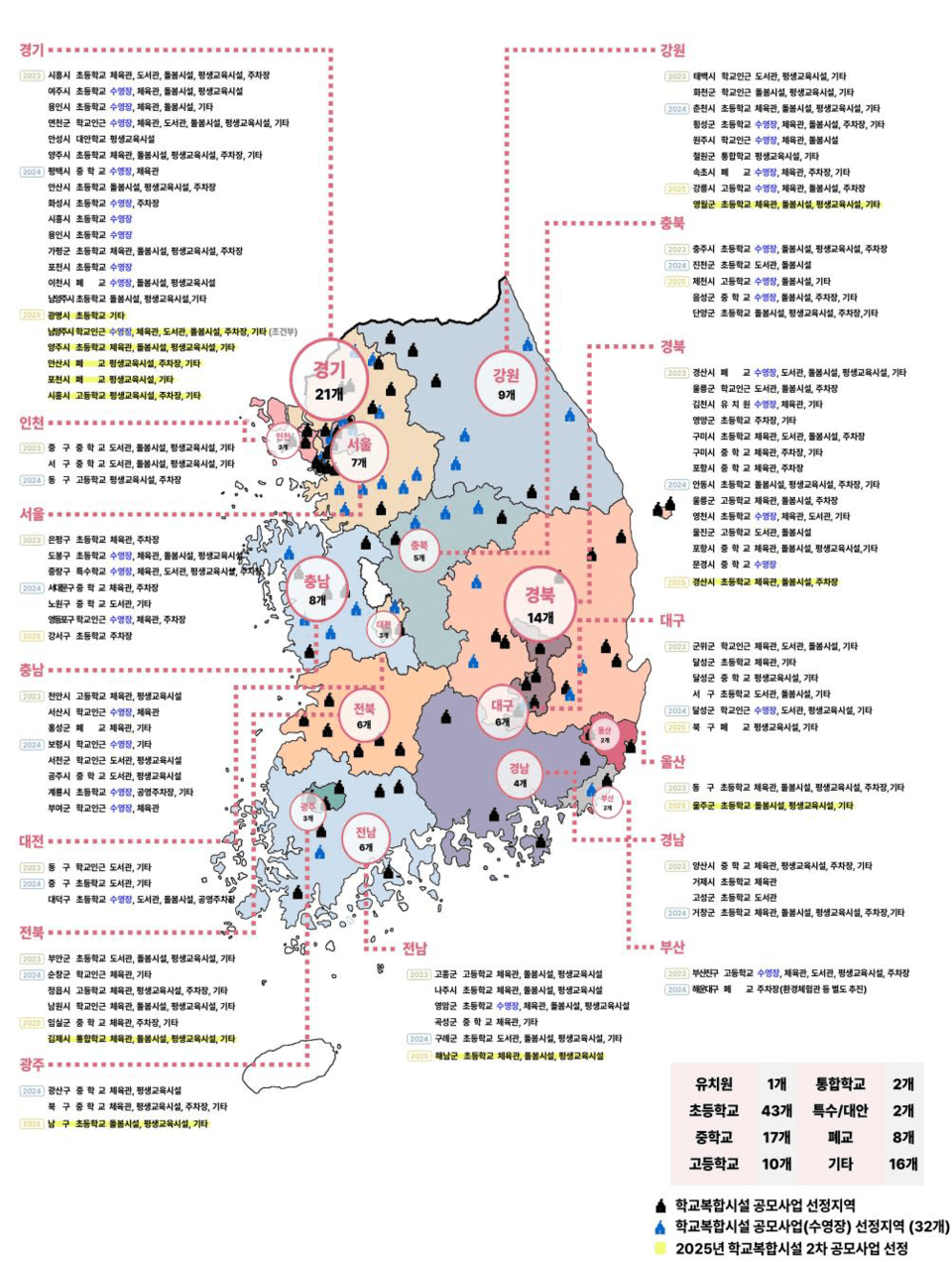The Ministry of Education is once again accelerating the spread of school complex facilities that students and local residents can use together.
On August 7, the Ministry of Education announced the results of the ‘2025 2nd School Complex Facility Competition Project’, selecting projects from 12 regions nationwide with a total scale of 2,545 billion won. Of this, the government will provide 96.6 billion won (38%) as national funding, with the remainder jointly covered by the education office and local governments.
School complex facilities expand existing school spaces into educational, cultural, welfare, and sports facilities, creating a multipurpose space for both students and local residents. The Ministry of Education has been promoting this project through a competition format since 2023, and to date, a cumulative total of 99 facilities have been selected. With this second competition included, it is expected that at least one complex facility will be installed in 144 (62.8%) out of 229 basic municipalities by 2025.
Six out of the 12 selected projects this time are located in rural areas at the township and village level. Notable among these is the ‘Geumgu Elementary and Middle School Complex Facility’ in Geumgu-myeon, Gimje-si, Jeollabuk-do, which is a multipurpose facility equipped with an indoor gymnasium, book cafe, self-directed learning space, fitness room, and Neulbom Center, regarded as a model that integrates learning and living infrastructure without regional discrimination. The Ministry of Education provides customized support, offering up to 50% national funding for projects in depopulated areas and those that include swimming pools.
The redevelopment of closed school sites into complex facilities is particularly noteworthy. The ‘(Old) Gyeongsu Elementary School Complex Facility’ in Ansan-si, Gyeonggi-do, plans to develop the closed school site into a new cultural and educational hub, including a children’s science experience center, village cafe, artificial intelligence (AI) and coding education center, and parking lot, offering a fresh impetus for communities struggling with declining student populations and urban hollowing.
Additionally, various regions have been selected, including the ‘Daechon Central Elementary School Top Learning Center’ in Nam-gu, Gwangju, ‘Gwangmyeong Elementary School Complex Facility’ in Gwangmyeong-si, Gyeonggi-do, ‘Gyeongsan Central Elementary School Complex Facility’ in Gyeongsan-si, Gyeongsangbuk-do, the ‘Childmore Center’ in Ulju-gun, Ulsan, ‘Wangsuk 2 District Community Center’ in Namyangju-si, Gyeonggi-do, as well as places in Yeongwol-gun, Gangwon-do, Siheung-si, Yangju-si, Pocheon-si, and Haenam-gun, Jeollanam-do.
The installation of complex facilities goes beyond merely expanding the educational infrastructure. They are being transformed into libraries, gyms, and cultural spaces for local residents, contributing to improved living conditions and enhanced community vitality. Alongside these efforts, the expansion of care infrastructure linked to Neulbom Centers and securing self-directed learning spaces are also being pursued, helping bridge educational gaps within regions.
Park Sung-min, the Director General of the Ministry of Education’s Planning and Coordination Office, said, “School complex facilities are a key pillar in the Ministry of Education’s effort to enhance living conditions and a place for community integration,” adding, “We will actively support the national spread of innovative models tailored to regional characteristics through close cooperation with local governments and education offices.”
